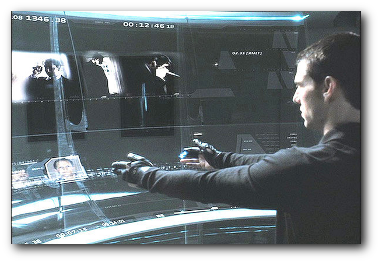Effective UI is a new book by … EffectiveUI, which aims to give an introduction to the art of building a superior user experience. EffectiveUI (the company) are a user experience agency from the US, recently known for building the iPad app Ideate, a tool for wire framing and sketching which uses pre-set templates for designers and developers. This book is the result of their years of experience, and aims to share some of the lessons they’ve learnt about delivering superior products through user based research.
Effective UI (the book this time) is not a self-start guide, or a definitive how-to, unlike Krug’s new book. Although it does give an introduction to UX tools, such as paper prototyping and user interviews, it doesn’t go into the depth that other books may do. Instead, the book seems to be aimed at a single person within an established company, who needs a one-stop resource to bring them up to speed on what User Experience is, and what it can do for their company.
Hence the book features a little bit of everything. Not only does it introduce the key concepts of UX, but it also has chapters on prototyping methods, how to understand and define key users (including how-to exercises), how to bring together a good UX team, and how to sell UX at your company (although it has less emphasis on subterfuge and guerrilla tactics than John Rhodes’ Selling Usability)

Pictured: John Rhodes at work
It’s in these high level overviews of crucial UX subjects that the book excels. EffectiveUI (the company) have been using these methods with clients for years, and have built up excellent ways of explaining the key concepts to clients. Through use of extended metaphors, referring to the process as a war, or akin to building a bridge, the book shares some of the best practices they’ve developed in this period. Some notable insights the book offers include de-emphasising the importance of written functional specs (which are incomplete, ill-informed, and slow to produce and react to change), and insight into appropriate methodologies, favouring an agile (with no capital letter) approach but also stressing the importance of not getting hung up on a formal adherence to a methodology.
The years of experience that the authors have had also give the book a wide range of real-world examples to draw upon, such as the production of year book software, which are used to illustrate and emphasise points. It’s definitely a credit to the book that the examples are relevant, and realistic, and help explain the key concepts being demonstrated, and how user centred testing improved the final product.
There are however a few odd choices, which may detract from the book’s ability to succeed in the marketplace. Most prominent is the name EffectiveUI (the book, not the company). I can understand why, as promotion for their company, the authors have chosen to name their book after their company. However it doesn’t seem very appropriate for the subject matter. Having not encountered the US-based company before, I had no prior knowledge of their work. Hence, the title has no associations to me. And it says “Effective UI”. Wouldn’t the reader assume the book is about producing an effective User Interface? Which isn’t the same thing as User Experience. Having looked for references to UI, it doesn’t appear in the index of this book at all (since it is a completely different subject in itself). I can see how this can lose potential customers – people looking for a book on UX are likely to miss this one, and people who buy this book looking for insights on UI will be disappointed.

UI. Not UX.
It’s also important to understand what this book is. It won’t give you step by step instructions on how to investigate UX. What it will do is introduce a non-UX specialist to the key concepts of UX, and give the reader an understanding of the benefits of UX . So don’t buy the book assuming that it’s a one-stop guide on becoming a UX practitioner (Each of the topics it covers could probably fill a book by themselves with how-to instructions!)
However, if you are new to the subject, and want a high-level introduction to key UX concepts, this is the book for you. Or if you are a manager, have heard about the emerging field of UX, and wonder what it can do for your business, this book will tell you everything you need to know. It won’t tell you any trade secrets, but it might just convince you to hire them!
Leave a Reply